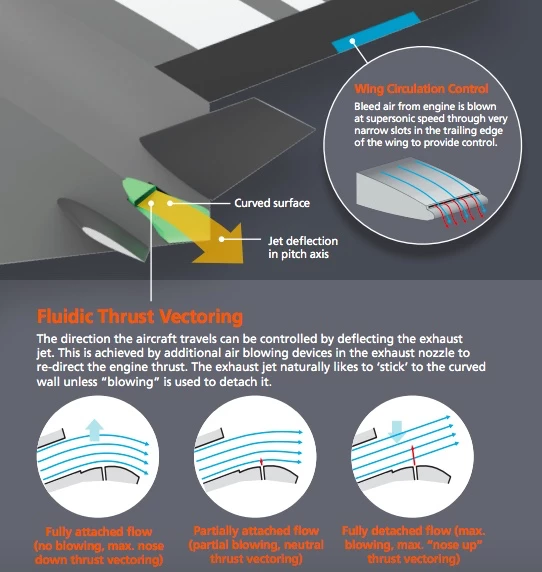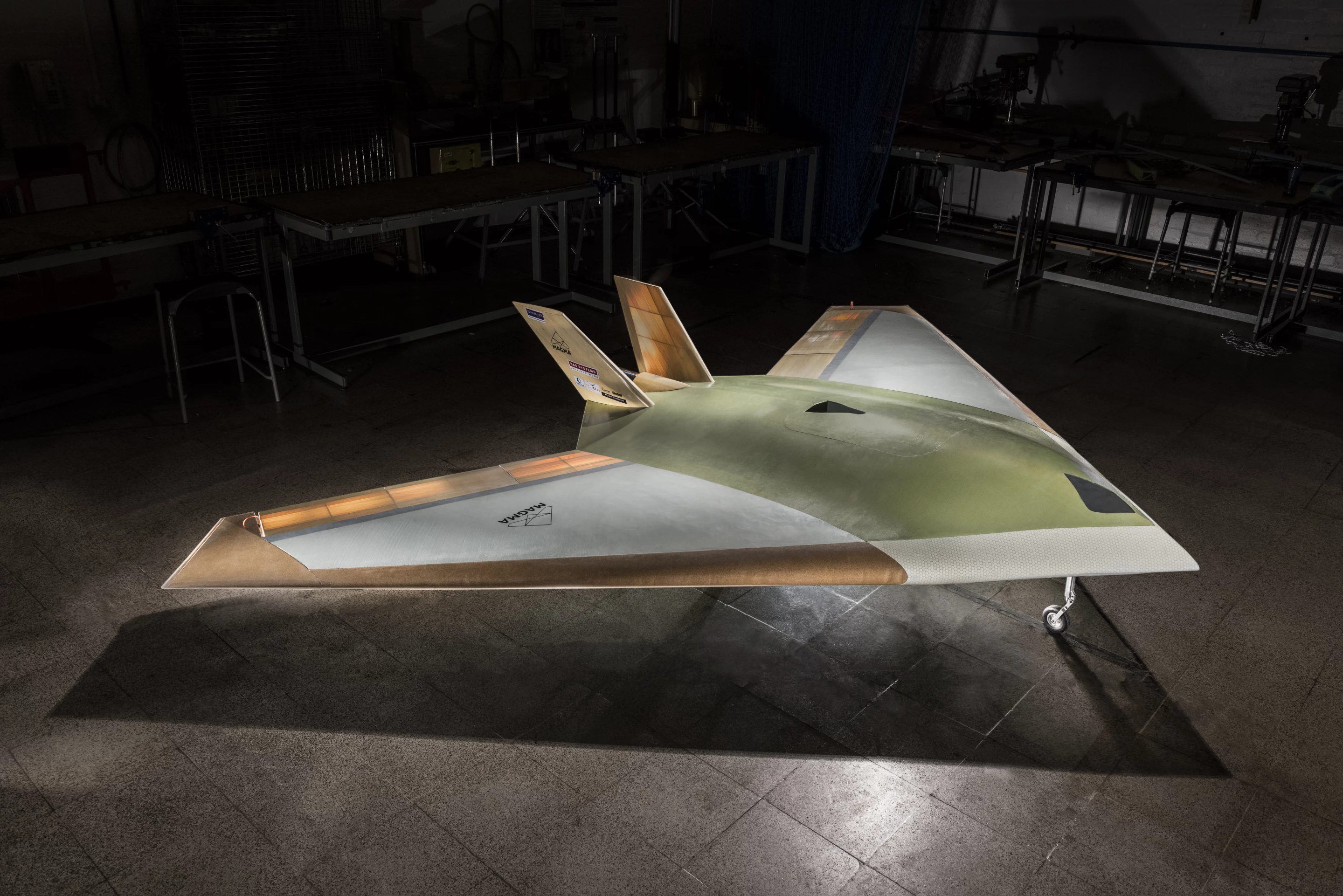If you're trying to make an aircraft lighter, stealthier, faster, and easier to maintain, how about getting rid of the flaps on the wings and tail? That's what engineers from BAE Systems have done on a small scale, working with colleagues from The University of Manchester. The resulting MAGMA UAV (unmanned aerial vehicle) is instead controlled by air blown from its single jet engine.
Instead of ailerons, the MAGMA's wings have a series of very narrow slots along their trailing edges. Some of the exhaust air is diverted from the engine, and exits those slots at supersonic speed. Utilizing this setup, it's possible to control the UAV's roll simply by controlling how much air is blown out of which wing at what time.
BAE has previously used a similar system in the wings of its DEMON UAV.
In the rear, meanwhile, the engine exhaust blows out of a vent that has a curved lower surface. Ordinarily, the exhaust air tends to "stick" to that surface, following its curve and thus leaving the vent at a particular angle – this angle determines the aircraft's pitch. By blowing a jet of air straight up out of that surface and into the exhaust, however, it's possible to "unstick" it and change the angle at which the exhaust leaves – thus changing the pitch.
Known as fluidic thrust vectoring, the system is illustrated in the bottom of the diagram below.

"Flight trials are planned for the coming months to demonstrate the novel flight control technologies with the ultimate aim of flying the aircraft without any moving control surfaces or fins," BAE states. "If successful, the tests will demonstrate the first ever use of such circulation control in flight on a gas turbine aircraft and from a single engine."
It is hoped that the technology could ultimately find its way into full-scale military and civilian aircraft.
Source: BAE Systems





